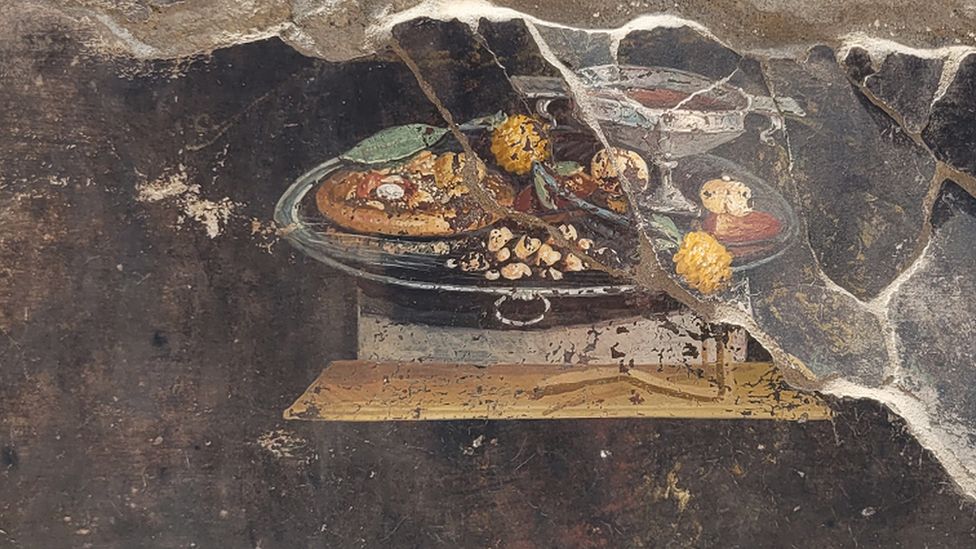A painting that might represent the forerunner to the Italian pizza has been discovered by archaeologists in the ancient Roman city of Pompeii.
The 2,000-year-old fresco's depiction of flatbread "may be a distant ancestor of the modern dish," according to Italy's ministry of culture.
But it isn't a pizza because it doesn't have the traditional ingredients.
Recent excavations at the site in southern Italy uncovered the fresco, which was located in the hall of a residence next to a bakery.
This year's discovery was made during fresh digs at Regio IX, one of the nine districts that make up the ancient city of Pompeii.
Digging resumed in January of this year, nearly two thousand years after the volcanic eruption that destroyed the city and left the building partially exposed.
According to archaeologists at the UNESCO World Heritage site, the recently discovered fresco showing the flatbread next to a wine goblet may have been served with fruits like pomegranates or dates, or it may have been seasoned with spices and a kind of pesto sauce.
A "frugal and simple meal" and the "luxury of silver trays" are contrasted, according to Pompeii director Gabriel Zuchtriegel.
"How can we fail to think, in this regard, of pizza, which was also created as a 'poor' dish in southern Italy but has since taken the world by storm and is also served in starred restaurants?" he asked.
In recent weeks, the working areas of the house, including the area near the oven, also yielded the skeletons of three individuals, a statement from the ministry of culture added.
Pompeii was covered in ash by Mount Vesuvius' eruption in AD 79, which effectively stopped time for the city and its inhabitants. Since its discovery in the 16th century, the location has provided archaeologists with a wealth of information.
The location is only about 23 kilometers (14 miles) away from Naples, which is where the Italian pizza that is now protected by Unesco was first made.







